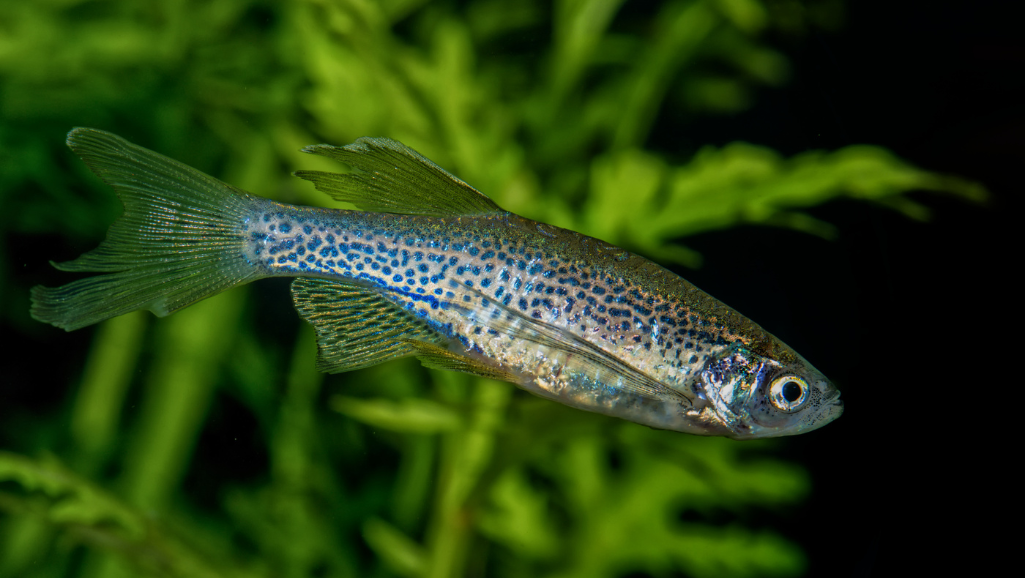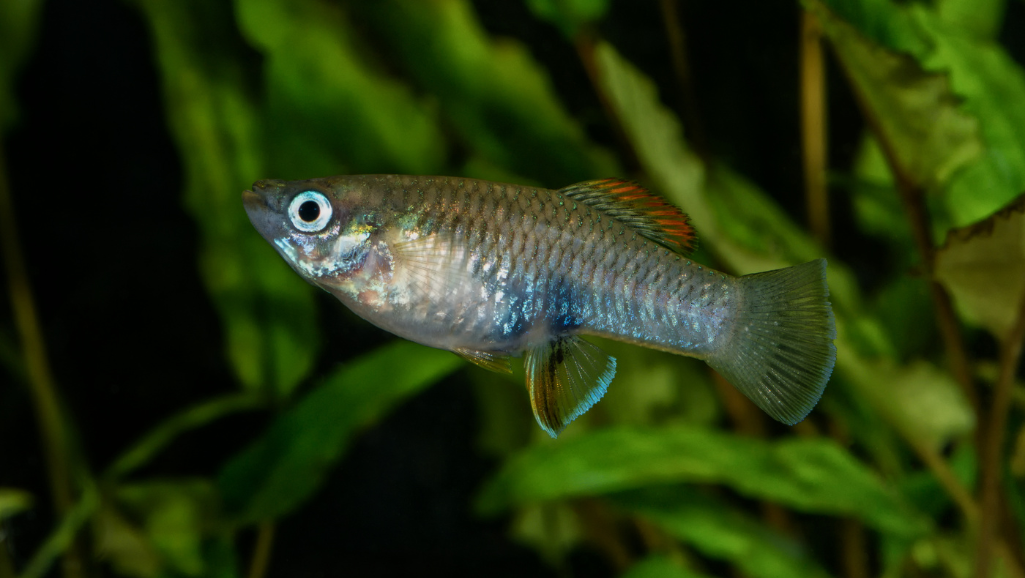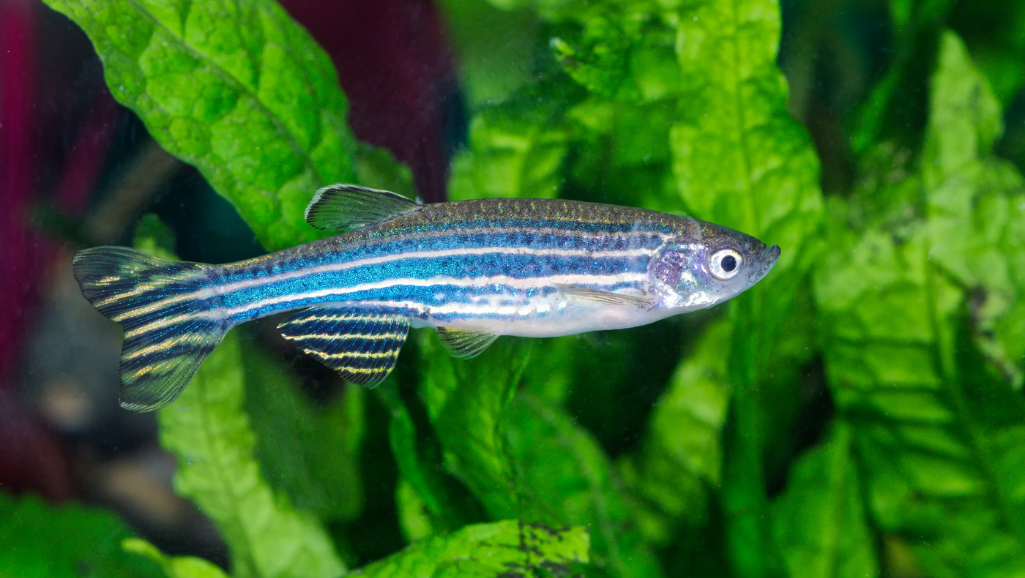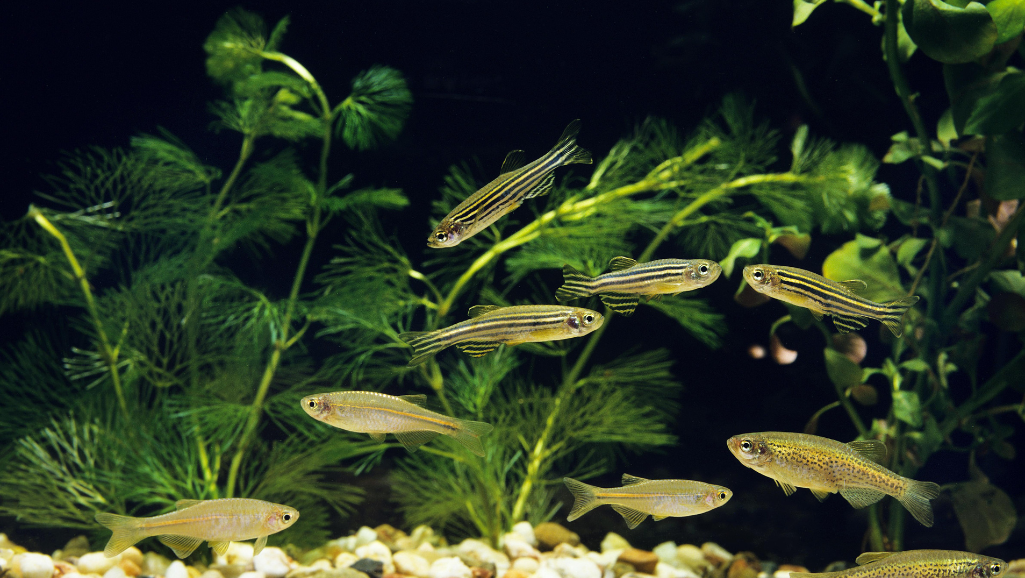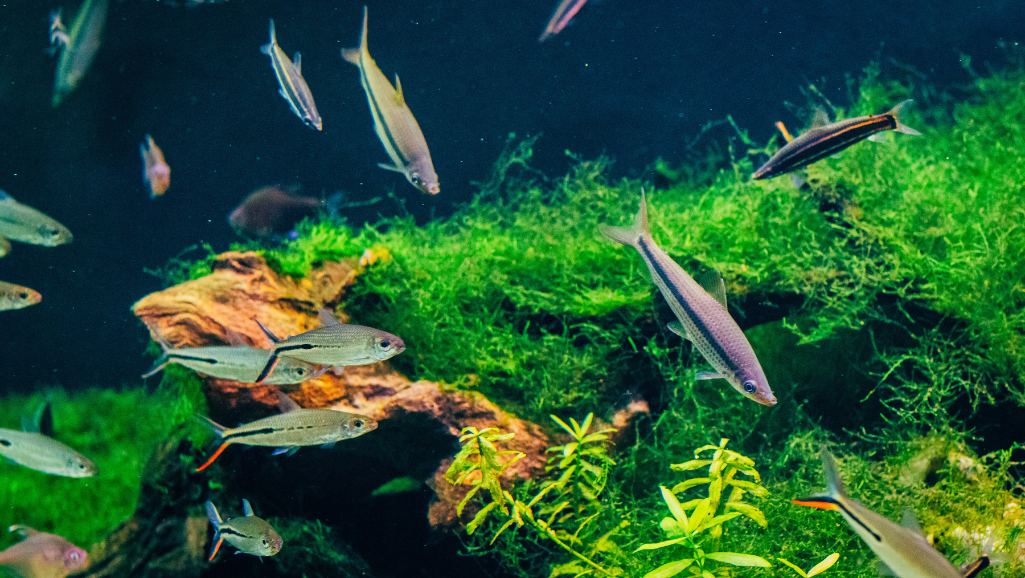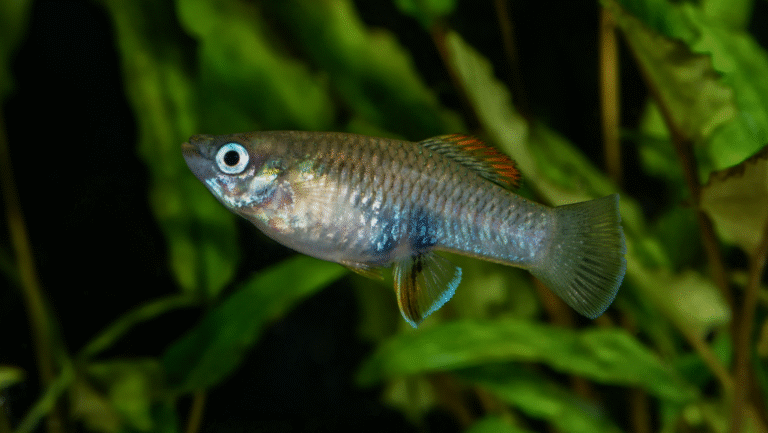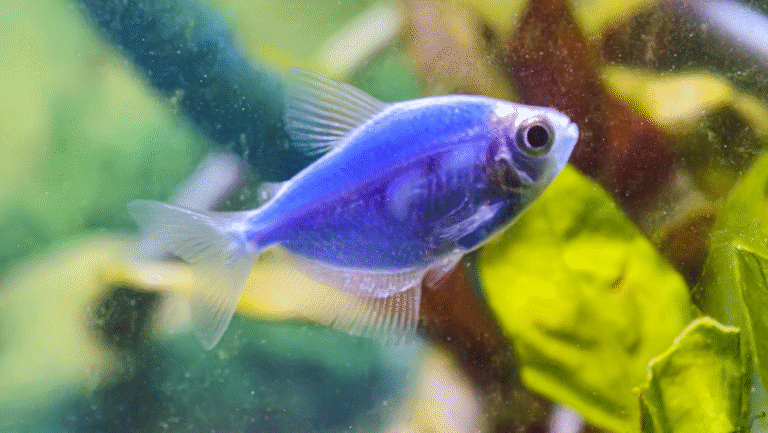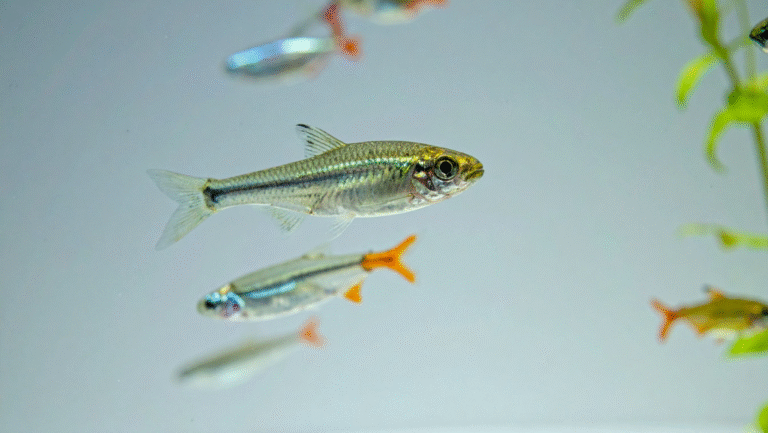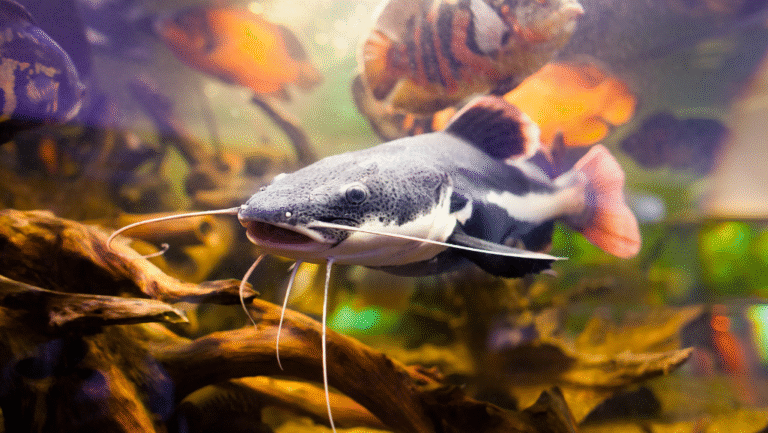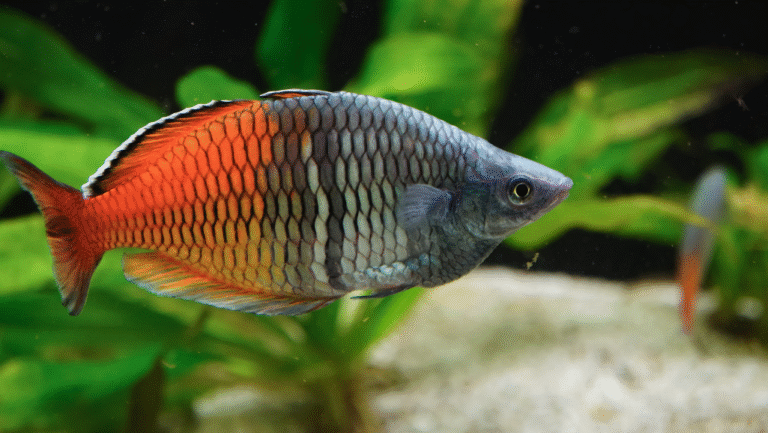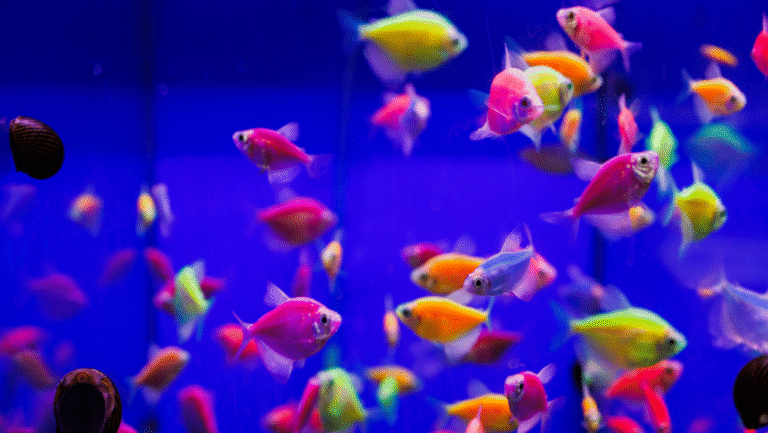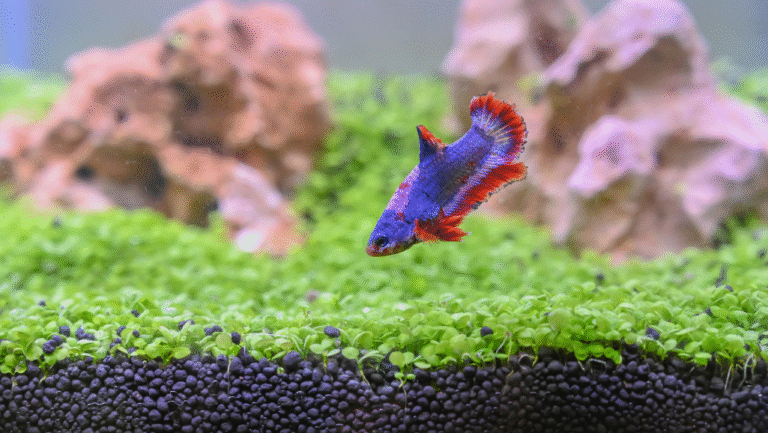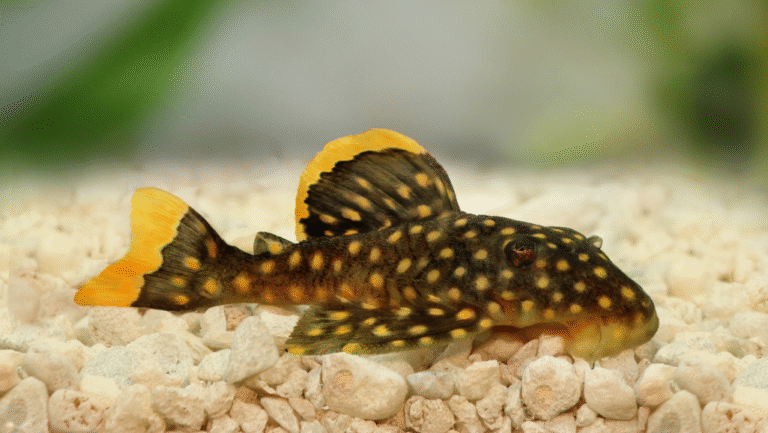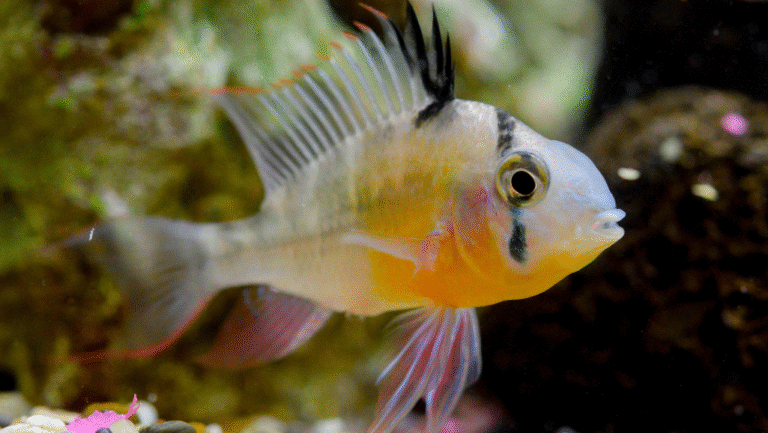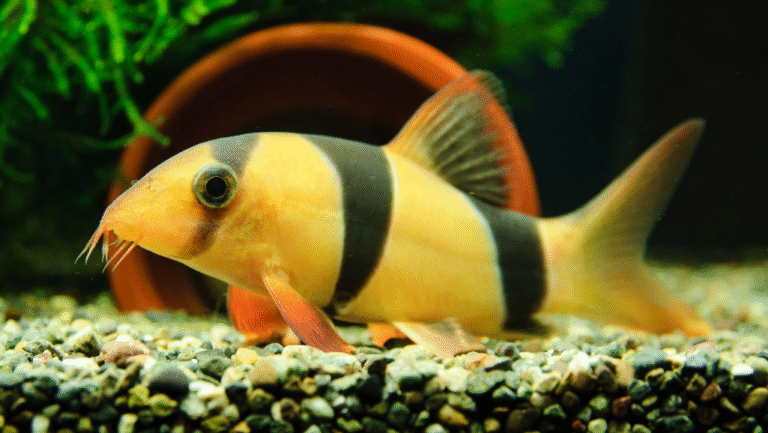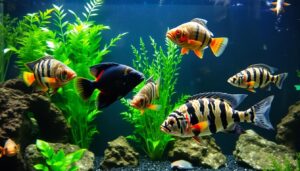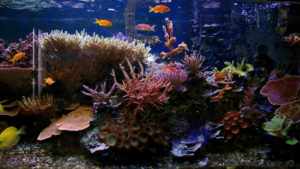Meet the zebra danio, a small, spirited freshwater fish that brings motion and color to any aquarium. For a clear starting point in Zebra Danio Care, note that this lively species commonly reaches about 1–2 inches as an adult and typically lives around 3–5 years with consistent, attentive husbandry.
Recognized by bold blue–purple horizontal stripes across a slim silver-gold body, the Danio rerio favors life in schools and is constantly swimming. Native to parts of India and Bangladesh, including seasonal streams and rice paddies, zebra danios tolerate a wide range of habitat conditions — a trait that makes them one of the hardier freshwater species for beginners and experienced keepers alike.
Captive-bred zebra danios have produced many striking color and finnage varieties, but most maintain the same active, peaceful behavior. These surface-oriented fish do best in community tanks where open swim lanes let schools shine, making them an ideal, rewarding choice for a lively home aquarium.
Key Takeaways
- Small, hardy freshwater fish reaching about 1–2 inches and living roughly 3–5 years with good care.
- Distinctive horizontal stripes and a sleek, torpedo-like shape that favors mid-to-top swimming.
- Native range includes India and Bangladesh; adaptable to varied water and habitat types.
- Many captive-bred color forms exist while preserving natural schooling groups.
- Peaceful, active, and excellent for beginner aquarists and community setups.
Read on for setup, feeding, and breeding tips that keep zebra danios healthy and colorful.
Set Up a Thriving Zebra Danio Aquarium: Water, Tank, and Habitat Essentials
To enjoy lively, synchronized schools, plan a footprint that favors horizontal speed and open midwater lanes rather than a tall, narrow tank.
The ideal tank is a long layout that offers clear swimways. A 20-gallon long (typically ~30″ length) is the sweet spot for a small, active group of zebra danios; it provides room for 6–10 fish to school comfortably. For smaller setups, a 10–15 gallon long can house a tiny group (4–6), while larger groups benefit from 30+ gallon long tanks to reduce stress and stabilize water chemistry. Frame the center with plants and decor along the sides so danios can race through unobstructed channels.
The essentials: water, temperature, and chemistry
Aim for stable water temperatures in the mid-60s to mid-70s °F for everyday comfort (about 64–75°F). If you’re trying to trigger spawning, a brief rise toward 78–80°F can help — keep any elevated temperature short and monitor oxygen and ammonia closely.
Target pH near 6.5–7.0 and general hardness around 5–12 dGH. Zebra danios tolerate a wide range of water conditions thanks to their native seasonal streams and flooded paddies, but stability is more important than hitting an exact number.
Filtration, flow, and lighting
Use a gentle sponge filter or a canister/HOB filter sized for the tank that provides good biological filtration without blasting the school with a harsh current. Aim for moderate flow that mimics small streams — roughly 4–6 tank turnovers per hour is a practical target (adjust outflow direction or add a spray bar/diffuser to soften the current).
Diffuse lighting and a darker substrate enhance the contrast of horizontal stripes, reduce glare, and make zebra danios more visible. Avoid overly bright, direct lights that can stress fish and encourage surface skittishness.
- Quick setup checklist: long aquarium (20‑gal long or larger), gentle sponge or HOB/canister filter, reliable heater, test kit, secure lid (zebra danios are jumpers), and a water conditioner.
- Tip: place taller plants and decor at the ends and sides, leaving open midwater space for schooling and display.
- Link shortcuts: see Feeding section for diet tips and the Breeding section for spawning temperature and setup details.
Plants, substrate, and decor
Arrange taller and floating plants around the tank edges and keep the center open to create clear midwater swim lanes. Natural decor—driftwood, smooth stones, and planted clumps—forms visual runways that encourage schooling and show off the zebra’s horizontal stripes and tail flicks.
Stocking and social behavior
“Keep groups of five to six or more to reduce fin nipping and promote cohesive schools.”
- Groups: Aim for at least 5–6 zebra danios per small tank; larger tanks should hold proportionally larger schools (6–10+ in a 20‑gal long, 10+ in 30‑gal long) so natural schooling dominates over dominance displays.
- Tankmates: Pick active, similarly sized companions — small barbs, many tetras, corydoras catfish, small loaches, and peaceful livebearers typically work well with zebra danios.
- Avoid: slow or long‑finned species (bettas, angelfish, frilly guppies) that attract nips and increase stress.
Substrate and planting tips: dark sand or fine gravel enhances contrast and makes zebra coloration pop; hardy, low‑maintenance plants like Vallisneria, Java fern, Anubias, and floating options (e.g., duckweed or frogbit) provide cover without blocking midwater lanes. For breeders and fry, include fine-leaved plants or spawning mops where eggs can collect.
Maintenance focuses on regular partial water changes (20–30% weekly for many setups), using a secure lid (zebra danios are energetic jumpers), and routine testing of water parameters. If you want a deeper dive, consult this complete guide to danio care for additional stocking and maintenance details.
Quick stocking guide: use a practical “inch-per-gallon” approach with caution—prefer school size and behavior over simple math. A better rule: prioritize open swimming space and add fish slowly, observing interactions for 1–2 weeks after introduction.
Feeding Zebra Danios the Right Way: Daily Care and Diet Variety
Smart daily meals—small, frequent, and varied—help active schooling zebra danios stay fit and vivid. Use a high-quality flake or nano pellet as the daily food base and rotate frozen and live options to supply protein and stimulate natural foraging behavior. Variety supports color, health, and energy for these energetic fish.
Balanced foods for omnivores
Zebra danios are opportunistic omnivores that accept flakes, micro pellets, freeze-dried or frozen brine shrimp, and small live foods. In the wild they eat tiny crustaceans, insect larvae, and worms, so aim for a mix with moderate protein (not ultra-high) and some plant-based ingredients to mirror a natural diet.
Smart feeding routines
- Feed tiny portions: give only what the group can finish in about 1–2 minutes — this minimizes waste and protects water quality.
- Spread meals: sprinkle pinches in a couple of spots so dominant swimmers don’t hog food and shy individuals can feed.
- Use treats wisely: offer baby brine, daphnia, or bloodworms as occasional treats (1–2 times per week) to condition adults and boost color.
- Protect water: remove visible uneaten food and avoid overfeeding that overwhelms your filter and fouls the water.
“Observe feeding — slow or missing interest can signal diet, health issues, or social stress.”
Simple micro-schedule (example): daily flakes/nano pellets in small portions; frozen brine or bloodworms 2× weekly; live daphnia or baby brine as an occasional treat. For fry, use appropriately sized foods—tiny powdered diets or infusoria—until they can accept baby brine shrimp (see Raising Fry).
When choosing commercial foods, favor formulations labeled for small tropical or schooling fish with high digestibility. If you use tubifex, source from reputable suppliers and feed sparingly (risk of contamination when not properly processed).
Keeping a consistent feeding routine supports growth, vibrant color, and the lively schooling display that makes zebra danios a favorite in community aquarium setups.
Zebra Danio Care for Community Tanks and Breeding Success
Community tanks and home breeding both succeed when you match active schooling zebra danios with lively, similar-sized companions and provide open midwater lanes with plant cover at the edges. This minimizes chasing and keeps motion focused into attractive schooling behavior rather than aggression.
Compatible tankmates and when to avoid long fins
- Good matches: many small barbs, most tetras (e.g., neon, ember), Corydoras catfish, small loaches, rainbowfish, mollies, platies, swordtails, and other danios — species that share similar water preferences and activity levels.
- Avoid: slow, long‑finned, or highly territorial species (bettas, angelfish, frilly guppies) that attract nips and raise stress in schooling fish.
Quarantine and compatibility testing
- Quarantine new arrivals for 2 weeks to watch for disease and acclimate them to your tank’s parameters.
- Introduce new tankmates gradually (float bags, rearrange decor to break territory, add in small groups) and observe for 7–14 days for bullying or persistent nipping.
- If bullying appears, increase plants or decor, rearrange the layout, or remove the aggressor.
Breeding intro checklist
- Condition selected breeders with richer foods (frozen/brine, high‑quality pellets) for several days.
- Use a separate shallow breeding tank or a partitioned area with fine‑leaved plants or marbles so eggs fall out of reach of adults.
- Trigger spawning with a fresh water change and a modest temperature rise (see Breeding Basics). Remove adults after spawning to protect eggs — danios will eat their own eggs.
These steps support both successful community keeping and accessible home breeding. For detailed fry care and egg protection methods, see the Breeding Basics section and the FAQ on tankmates and eggs.
School size and social behavior
Zebra danios are highly social — keep groups of at least five to stabilize hierarchy and reduce fin‑nipping. In larger schools (8–12+ in appropriately sized tanks) synchronized swimming becomes the dominant behavior, producing the calm, attractive display most keepers want.
Breeding basics and egg protection
To condition breeders, feed richer foods (frozen or live brine shrimp, high‑quality pellets) for 5–7 days. Trigger spawning by performing a fresh water change and gently raising temperature by a few degrees (for example, from 72–75°F up toward 78°F) in the morning — monitor closely and keep temperature increases short to avoid stress.
Use a shallow breeding tank (around 5–8 inches deep) with fine‑leaved plants, a spawning mop, or a layer of marbles/coarse gravel so eggs fall out of reach of adults. Alternatives include mesh dividers that allow eggs to drop below but keep parents separated. Remove adults after spawning since parents will eat their eggs.
Raising fry
- Egg & hatch timeline: eggs typically hatch in ~2–3 days at warm breeding temperatures; fry become free‑swimming about 3–7 days after hatching depending on temperature.
- Day 0–7: keep very gentle flow (sponge filter) and feed infusoria or commercially available liquid fry food under ~100 microns.
- Week 2: introduce freshly hatched baby brine shrimp as fry grow larger and can handle larger prey items.
- Week 4+: gradually offer finely crushed flakes or micro‑pellets as juveniles transition to adult diets.
Perform frequent, small water changes (for example, 5–10% daily or 10–15% every other day) to keep water pristine without shocking fry. Use a sponge filter to provide biological filtration and gentle circulation. If you plan to culture infusoria or rotifers, follow a trusted guide or supplier instructions to ensure reliable first foods.
“Breeding at home teaches care and patience while supporting sustainable, healthy schools in your freshwater tank.”
Conclusion
A well-planned tank and steady routine reveal why the zebra danio, or Danio rerio, is a favorite for home aquariums.
These active, schooling fish thrive in groups, enjoy open midwater lanes, and adapt across a wide range of habitat conditions. Prioritize stable water quality, varied diet, and regular maintenance to keep their vivid color and crisp horizontal stripes healthy.
Breeding is accessible for hobbyists who prepare with gentle filtration, egg protection (marbles, spawning mops, or mesh traps), and appropriate first foods such as infusoria or baby brine shrimp. With mindful care and the right layout, danios turn ordinary tanks into lively displays that welcome both beginners and seasoned keepers.
FAQ
What size tank is best for a small, active schooling fish?
What are the ideal water parameters for healthy fish?
How strong should filtration and flow be for these active swimmers?
Which plants and substrate work best to highlight stripes and color?
What foods and feeding routine ensure growth and vibrant health?
Can these fish live with community species like tetras and guppies?
How large should a school be to reduce stress and nipping?
What are the basics of conditioning and triggering spawning at home?
How do you protect eggs and raise fry successfully?
How long until eggs hatch and fry become free-swimming?
What common health issues should owners watch for, and how can they prevent them?
Are shrimp and snails safe tankmates in a planted community?
How long do adults typically live with proper care?
Ready to set up your tank? Download our Zebra Danio Care checklist or explore our setup guide to get started.
